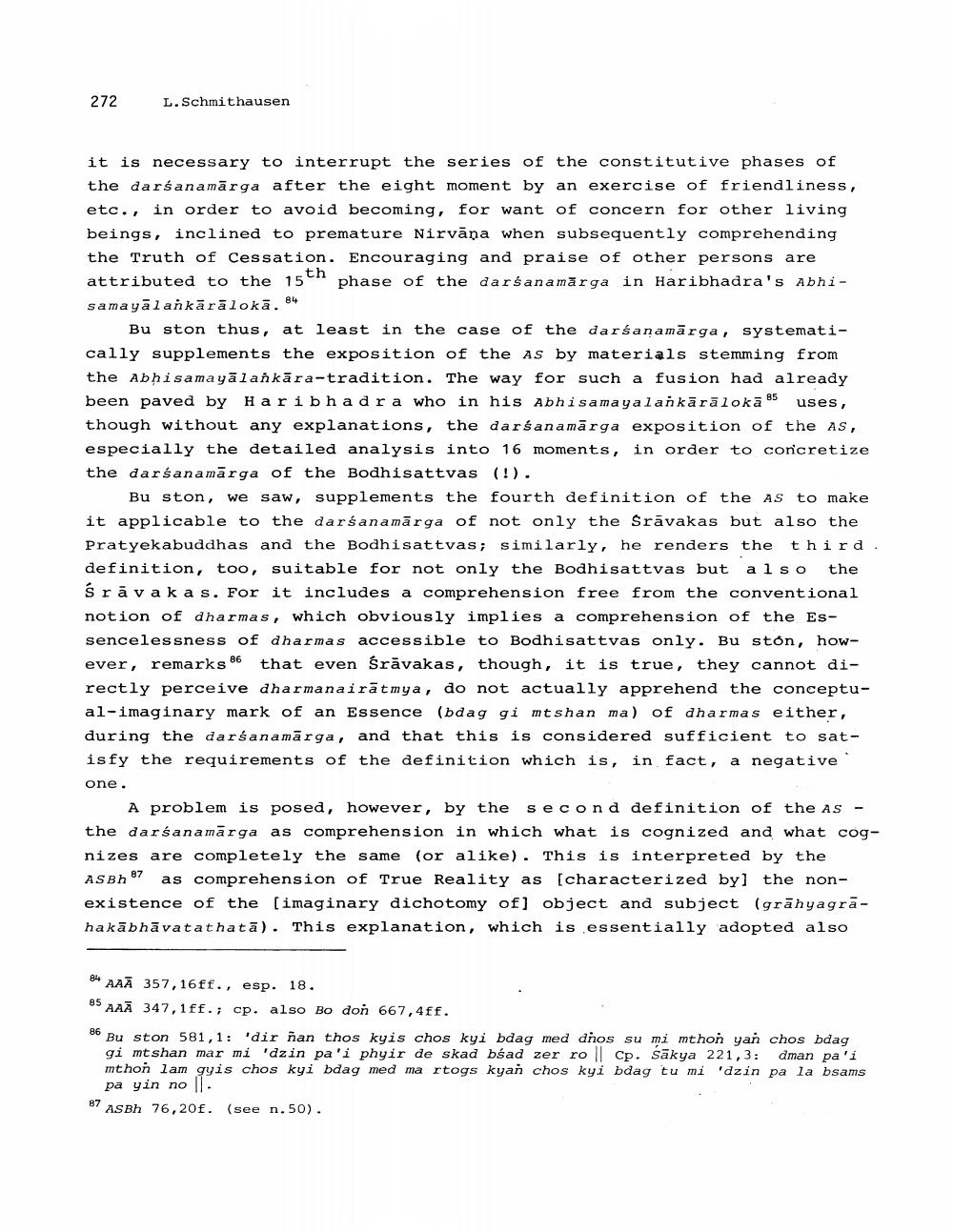________________
272
L.Schmithausen
it is necessary to interrupt the series of the constitutive phases of the darśanamārga after the eight moment by an exercise of friendliness, etc., in order to avoid becoming, for want of concern for other living beings, inclined to premature Nirvāna when subsequently comprehending the Truth of Cessation. Encouraging and praise of other persons are attributed to the 15" phase of the darśanamārga in Haribhadra's Abhisamayālankārā lokā. 84
Bu ston thus, at least in the case of the darśanamārga, systematically supplements the exposition of the As by materials stemming from the Abhisamayalankāra-tradition. The way for such a fusion had already been paved by Haribhadra who in his Abhisamayalankārā lokās uses, though without any explanations, the darśanamārga exposition of the As, especially the detailed analysis into 16 moments, in order to concretize the darśanamārga of the Bodhisattvas (!).
Bu ston, we saw, supplements the fourth definition of the AS to make it applicable to the darśanamārga of not only the Srāvakas but also the Pratyekabuddhas and the Bodhisattvas; similarly, he renders the third. definition, too, suitable for not only the Bodhisattvas but also the śrāva ka s. For it includes a comprehension free from the conventional notion of dharmas, which obviously implies a comprehension of the Essencelessness of dharmas accessible to Bodhisattvas only. Bu ston, however, remarks 86 that even śrāvakas, though, it is true, they cannot directly perceive dharmanairātmya, do not actually apprehend the conceptual-imaginary mark of an Essence (bdag gi mtshan ma) of dharmas either, during the darśanamārga, and that this is considered sufficient to satisfy the requirements of the definition which is, in fact, a negative one.
A problem is posed, however, by the second definition of the AS - the darśanamārga as comprehension in which what is cognized and what cognizes are completely the same (or alike). This is interpreted by the ASBh® as comprehension of True Reality as [characterized by] the nonexistence of the [imaginary dichotomy of] object and subject (grāhyagrahakābhāvatathatā). This explanation, which is essentially adopted also
84 AAĀ 357,16ff., esp. 18. 85 AAĀ 347, 1ff.; cp. also Bo don 667,4ff. 86 Bu ston 581,1: 'dir nan thos kyis chos kyi bdag med dnos su mi mthon yan chos bdag
gi mtshan mar mi 'dzin pa'i phyir de skad bśad zer roll Cp. Sākya 221,3: dman pa'i mthon lam gyis chos kyi bdag med ma rtogs kyan chos kyi bdag tu mi 'dzin pa la bsams
pa yin no ll. 87 ASBH 76,20f. (see n.50).




